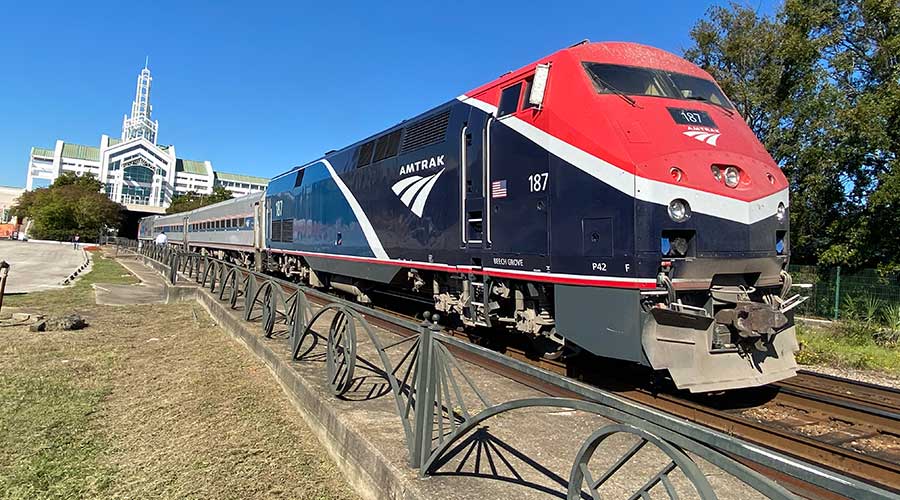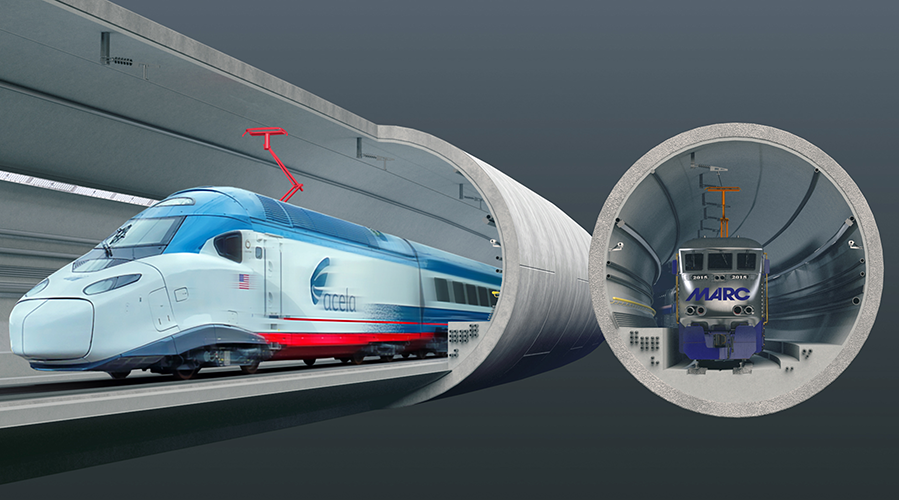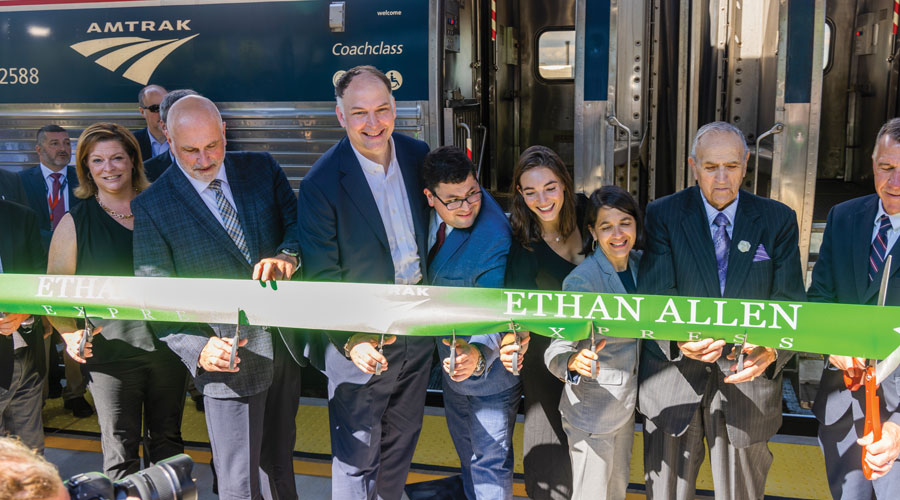Stay updated on news, articles and information for the rail industry
 railPrime
railPrime
March 2015
Rail News: Amtrak
Amtrak writers in residence begin maiden voyages
By Daniel Niepow, Associate Editor
In late January, former Entertainment Weekly film critic Lisa Schwarzbaum took an Amtrak ride that spanned nearly two weeks. Originating in Manhattan’s Penn Station, it was a sprawling journey that carried her through the Upper Midwest, into the Pacific Northwest and finally all the way back to New York City. Modern aviation essentially has done away with the need for this sort of lengthy overland haul, but, as one of Amtrak’s first "writers in residence," Schwarzbaum took it on willingly.
As part of the program, the national passenger railroad furnished her entire journey, as well as her meals and a roomette, and then left her free to utilize her time on board as she pleased.
For Schwarzbaum, that meant spending time working on a piece about her father, several detailed entries for Amtrak's blog and plenty of quiet observation along the tracks.
"I am convinced that every minute of this psychic unfurling, this drowsy gazing at endless stretches of flat, snow-crusted winter landscape, is valuable to my work — the work of writing," she wrote in one of her blog entries.
Schwarzbaum certainly wasn't alone in her sentiments about train travel. Last year, more than 16,000 people applied for a slot in Amtrak’s Residency program; 24 ultimately were chosen.
Inklings for the program run back to late 2013, stemming from author Alexander Chee's off-the-cuff comment in an interview with the literary nonprofit PEN American Center. He casually expressed a wish for Amtrak to host a residency-style program for writers, since trains were his favorite places to write. On Twitter, Chee’s comments resonated with several other writers, whose retweets eventually reached the eyes of Amtrak’s media team.
After a test run with freelance writer Jessica Gross, who logged a positive account of her journey in the literary magazine The Paris Review, Amtrak formally opened up applications.
Chee and three other judges then worked to cull 24 writers from a list of 115 semifinalists. The other three judges: Amtrak Vice President of Government Affairs Joe McHugh, National Endowment for the Arts Director of Literature Amy Stolls and Random House Editor Samuel Nicholson.
The judges selected writers based on both quality of writing and their potential social media and online audience reach. Selecting writers who already had extensive influence, like Schwarzbaum, made sense for the program: Her witty accounts may inspire her readers to try something similar, or at the very least, utilize the rail service more frequently.
"One of the goals was to bring more eyes, awareness and excitement for this service," says Alicia Lee, senior social media official at Amtrak. "We’ve done that."
A current New York City resident, Schwarzbaum came to her residency after many years of utilizing trains along Amtrak's Northeast Corridor, but cross-country train travel was a new frontier for the writer.
Through her chats with North Dakota oil workers and Montana farmers, she was able to witness a unique cross-section of the country’s economy.
"I loved the idea of being able to see the country unfold in real time,” she said in a phone interview. "I find it very inspirational."
The journey also allowed her to reflect on her sobering experience riding Amtrak trains as she and many other New York-based film critics rushed home from the Toronto Film festival on Sept. 11, 2001. Airports were closed, and long-distance rail was the only option.
"Our trains were packed with anxious, shocked, sad New Yorkers, huddled together," she says of the experience. "Now, every anniversary of 9/11, Amtrak figures in my memories."
Like Schwarzbaum, fellow Amtrak resident Jennifer Boylan has made frequent use of Amtrak's Northeast Corridor lines. For Boylan, an author and the inaugural Anna Quindlen Writer in Residence at Barnard College of Columbia University, Amtrak travel has almost always been "a fact of life," but a trip of this magnitude was a first. Her journey encompassed an 8,000-mile round-trip route from Maine to California.
She used her trip to finish up a novel, write a sizeable essay for an anthology and craft a course syllabus, among a few other projects. While the journey was creatively productive for her, it was also humbling. As she traveled along the West Coast, her mind turned to early American pioneers.
"It makes you understand the incredible hardship of the early settlers in this country," she says. "It’s a miracle that any of us are here at all."
Comic book writer Bill Willingham, the program's inaugural fellow, also was able to complete a wide swath of his own projects during his residency, all while logging entries for Amtrak's blog. Work on comic book scripts, screenplays and other stories rank among his onboard creative endeavors.
"I tend to bring a lot of stuff so that if one thing is not working for me, I can switch to another rather than surrender to writer’s block, which I think is kind of a fiction," says Willingham.
When news of the program began circulating last year, some critics feared it would amount to corporate sponsorship, rather than a true artists' residency. Although there's no denying that the program gives mostly positive publicity for the service, the writers were not required to produce anything related to their journey or Amtrak generally, says Lee.
"In the social media space, audiences can see through anything that is contrived or fake," she adds.
Boylan, who embarked on the railroad’s second official residency in November 2014, even made a few brief, somewhat critical comments about Amtrak’s service in a piece she wrote for the online news magazine Salon after her trip.
"The quarters are decidedly cramped," she wrote. "Not only that, but the equipment is old, some of it dating back to the 1950s. Delays are common: On the long-distance routes trains are routinely two, four, even six hours late."
Overall, Boylan spoke positively of her residency. Cramped quarters notwithstanding, she felt the trip was inspirational.
"Cross-country trains are national treasures," she says.
Keywords
Browse articles on Amtrak Amtrak ResidencyContact Progressive Railroading editorial staff.


 2025 MOW Spending Report: Passenger-rail programs
2025 MOW Spending Report: Passenger-rail programs
 Gardner steps down as Amtrak CEO
Gardner steps down as Amtrak CEO
 Guest comment: Oliver Wyman’s David Hunt
Guest comment: Oliver Wyman’s David Hunt
 Women of Influence in Rail eBook
Women of Influence in Rail eBook








